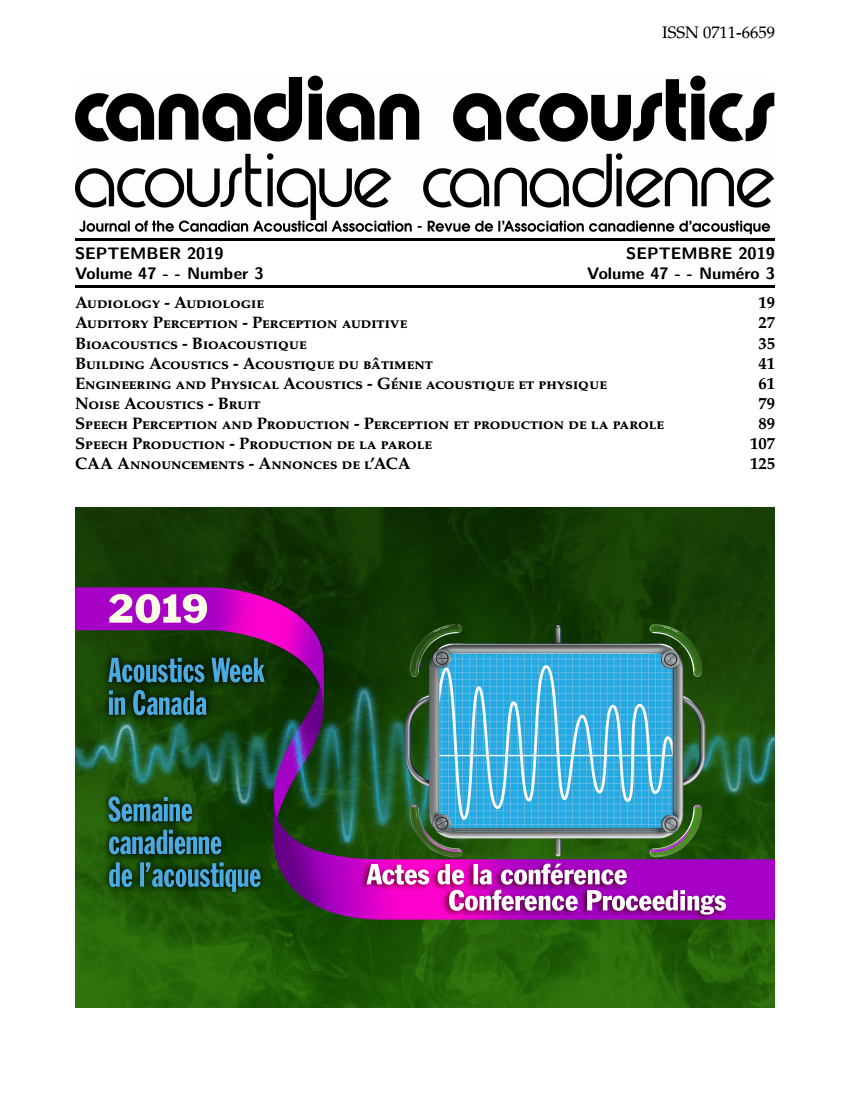EEG-to-F0: Establishing Artificial Neuro-Muscular Pathway For Kinematics-Based Fundamental Frequency Control
Abstract
The fundamental frequency (F0) of human voice is generally controlled by changing the vocal fold parameters (including tension, length and mass), which in turn is manipulated by the muscle exciters, activated by the neural synergies. In order to begin investigating the neuromuscular F0 control pathway, we simulate a simple biomechanical arm prototype (instead of an artificial vocal tract) that tends to control F0 of an artificial sound synthesiser based on the elbow movements. The intended arm movements are decoded from the EEG signal inputs (collected simultaneously with the kinematic hand data of the participant) through a combined machine learning and biomechanical modeling strategy. The machine learning model is employed to identify the muscle activation of a single-muscle arm model in ArtiSynth (from input brain signal), in order to match the actual kinematic (elbow joint angle) data . The biomechanical model utilises this estimated muscle excitation to produce corresponding changes in elbow angle, which is then linearly mapped to F0 of a vocal sound synthesiser. We use the F0 value mapped from the actual kinematic hand data (via same function) as the ground truth and compare the F0 estimated from brain signal. A detailed qualitative and quantitative performance comparison shows that the proposed neuromuscular pathway can indeed be utilised to accurately control the vocal fundamental frequency, thereby demonstrating the success of our closed loop neuro-biomechanical control scheme.
Additional Files
Published
How to Cite
Issue
Section
License
Author Licensing Addendum
This Licensing Addendum ("Addendum") is entered into between the undersigned Author(s) and Canadian Acoustics journal published by the Canadian Acoustical Association (hereinafter referred to as the "Publisher"). The Author(s) and the Publisher agree as follows:
-
Retained Rights: The Author(s) retain(s) the following rights:
- The right to reproduce, distribute, and publicly display the Work on the Author's personal website or the website of the Author's institution.
- The right to use the Work in the Author's teaching activities and presentations.
- The right to include the Work in a compilation for the Author's personal use, not for sale.
-
Grant of License: The Author(s) grant(s) to the Publisher a worldwide exclusive license to publish, reproduce, distribute, and display the Work in Canadian Acoustics and any other formats and media deemed appropriate by the Publisher.
-
Attribution: The Publisher agrees to include proper attribution to the Author(s) in all publications and reproductions of the Work.
-
No Conflict: This Addendum is intended to be in harmony with, and not in conflict with, the terms and conditions of the original agreement entered into between the Author(s) and the Publisher.
-
Copyright Clause: Copyright on articles is held by the Author(s). The corresponding Author has the right to grant on behalf of all Authors and does grant on behalf of all Authors, a worldwide exclusive license to the Publisher and its licensees in perpetuity, in all forms, formats, and media (whether known now or created in the future), including but not limited to the rights to publish, reproduce, distribute, display, store, translate, create adaptations, reprints, include within collections, and create summaries, extracts, and/or abstracts of the Contribution.


